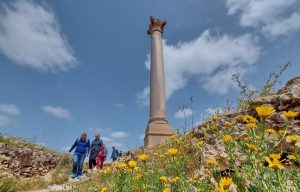Predynastic Period (3800 – 3200 BCE.)
The predynastic period is the final stage of the Neolithic epoch, preceding the development of writing and the foundation of the state in the Dynastic epoch.
Sedentary communities on the Nile’s banks and the rise of cultural centers define this period. Egyptians understood how to farm in the 6th millennium BCE, and they built grain storage silos. Furthermore, they created ceramics in a variety of styles to differentiate each stage of this time.
The Egyptians built dwellings out of reeds and mud bricks and created tombs with funerary furnishings in the 5th millennium BCE. It was also around this time that the first evidence of keeping the corpses of the deceased surfaced.
The Egyptians discovered and smelted minerals around the 4th millennium BCE, and developed the first known writing system in history, which was one of the predynastic period’s major achievements.
The earliest political combines of Upper Egypt formed from aggregations of independent towns and urban centers between 4500 BCE and 4500 BCE and succeeded in creating numerous nomes with political and economic significance.
The Egyptians then succeeded in uniting Upper and Lower Egypt under one governmental authority about 3600 BCE, building the first united state capital, and established a ruling hierarchy based on royal inheritance, which is known as the “Dynastic period.”
Cultures of Naqada – NMEC
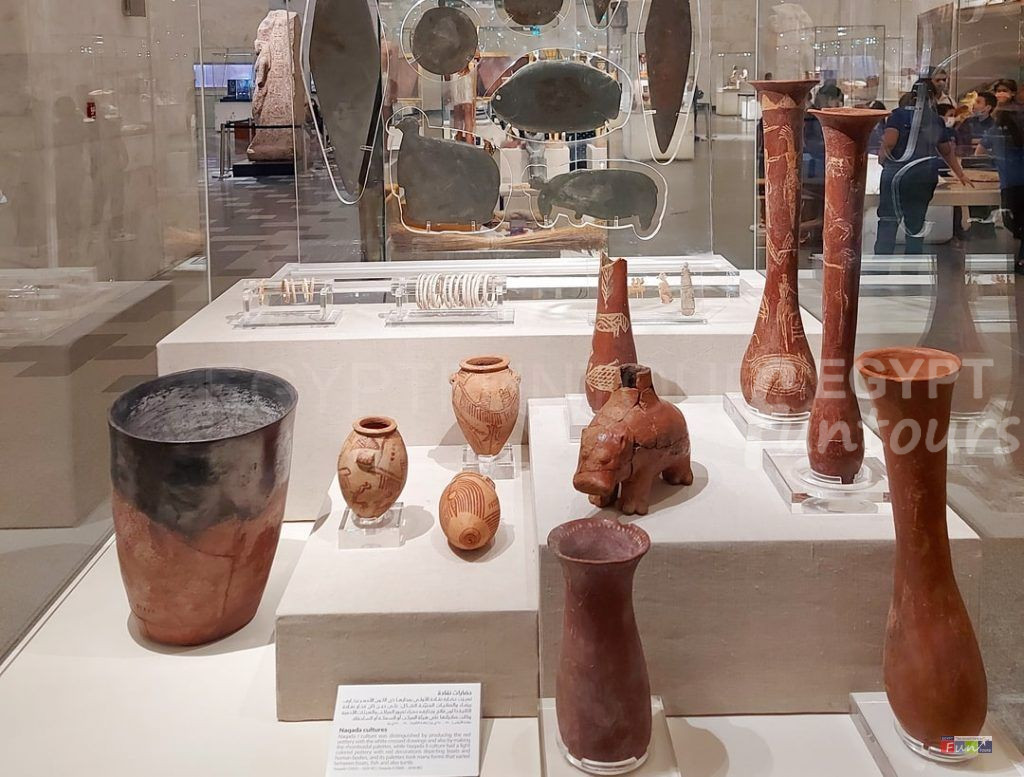
The Naqada I culture was defined by its red pottery with white crossing designs and rhomboidal palettes, but the Naqada II culture had light-colored pottery with red decorations representing boats and human figures, and its palettes took numerous forms that ranged between boats, fish, and turtles.
Naqada I (3800-3500 BCE) – Naqada II (3500-3200 BCE)
Wooden Hoes
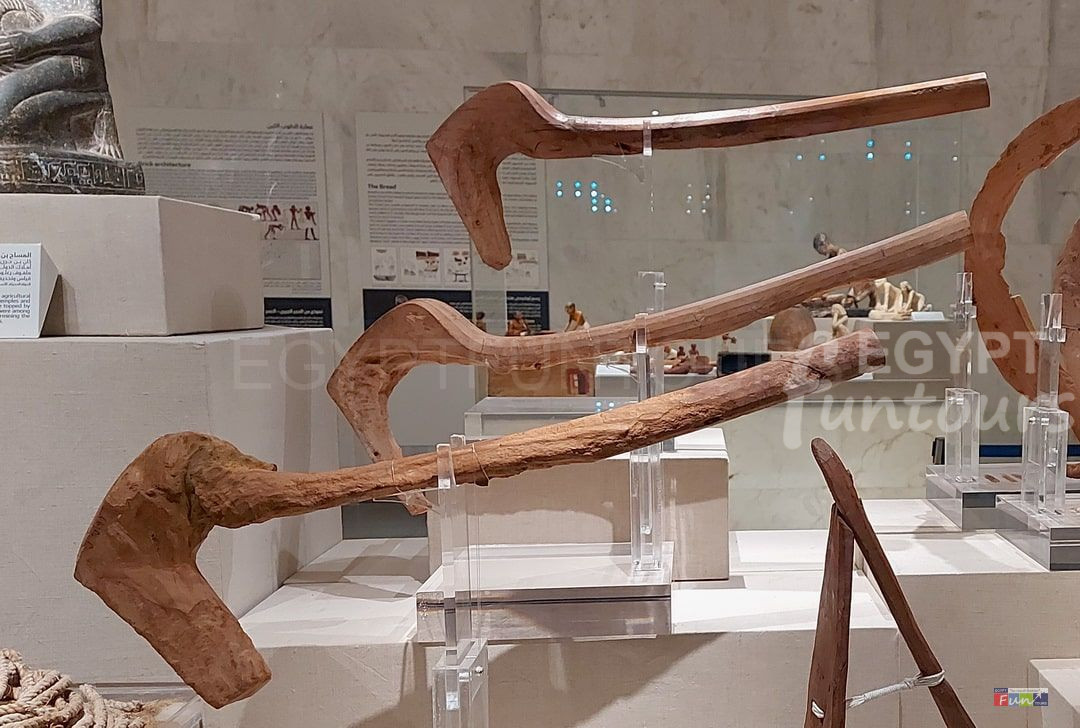
This is one of the earliest types of hoes used to plowing agricultural land, particularly during the sowing season. 1st Dynasty (3100 – 2890 BCE) | Hemaka Mastaba, Saqqara / Material: Wood
Sickle
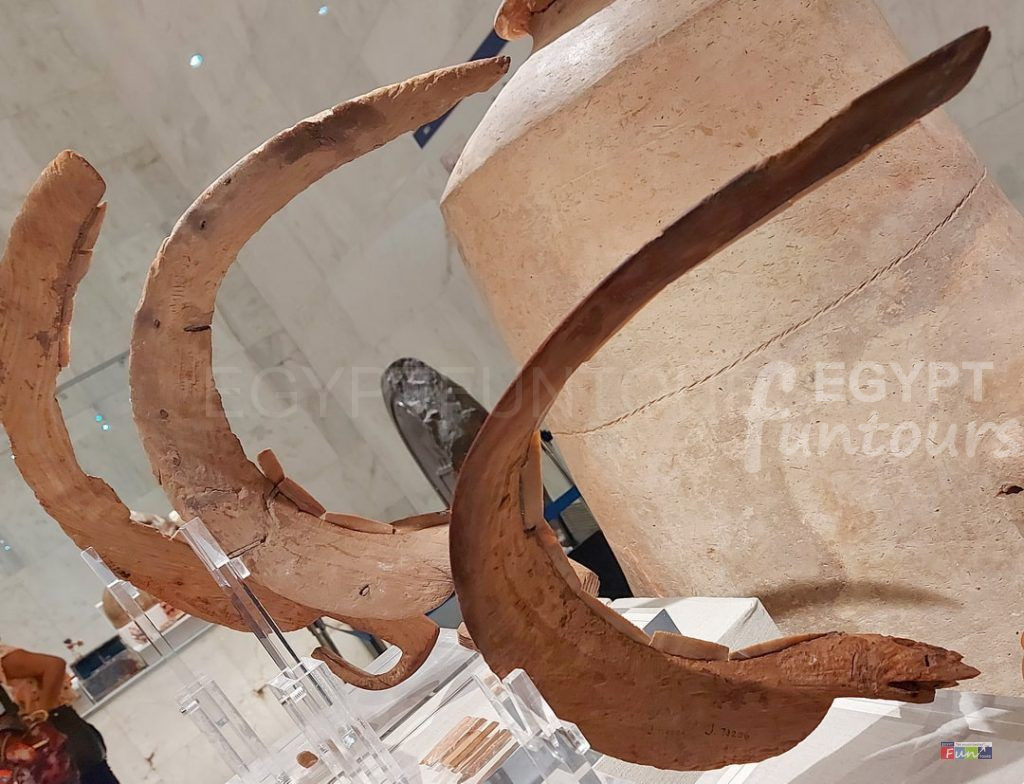
Sickles were one of the most significant instruments used by the ancient Egyptians in agriculture; their blades were made of honed flint and were used for cutting and gathering crops.
1st Dynasty (3100 – 2890 BCE) / Hemaka Mastaba, Saqqara / Wood – Flint
A Silo
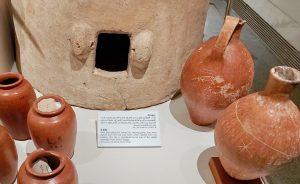
Silos were installed in households to store grains. They were inserted from the top and removed from the bottom when needed. This silo is thought to be one of the earliest examples from ancient Egypt.
Ezbet Al-Walda, Helwan / 1st Dynasty / Pottery







